-
Our Procedures
Our entire dental team is committed to providing you and your family the personalized,gentle and dental care for a long dental health and beautiful smile.We can help you achieve the smile, and improve your confidence. At ViVi Spa Dental, you the result is dazzling smile!
Treatments
-
Active Therapy & Prevent
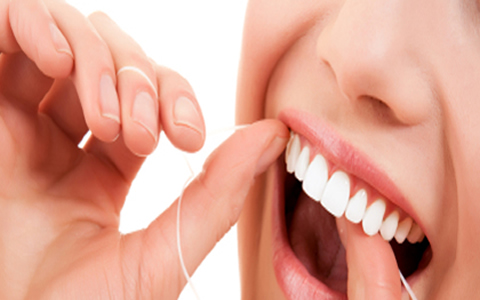
- Oral Cancer Exam
- Oral Hygiene Aids
- Sealants
- Dental Exams &Prophys
- Dental X-Rays
- Home Care
- How to Properly Brush & Floss
A preventive program is a cooperative effort by the patient, dentist, and dental staff to preserve the natural dentition and supporting structures by preventing the onset, progress, and recurrence of dental diseases and conditions.
Preventing dental disease starts at home with good oral hygiene and a balanced diet. It is continued in the dental office by the efforts of your dentist and dental hygienist to promote, restore, and maintain your oral health.
Prevention also includes regular dental exams, prophys, and x-rays. Sealants and fluoride are also great preventive treatments that help protect the teeth.
Prevention helps avoid serious and costly dental problems and is the key to having a healthy, confident, beautiful smile.
Active Therapy & Prevention
Periodental Disease
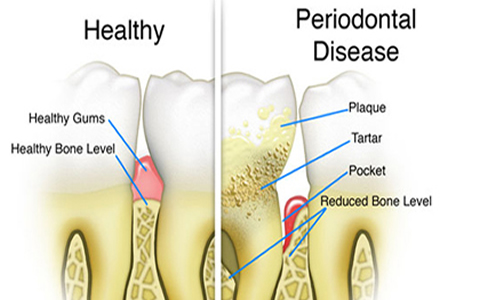
The word periodontal means ’around the tooth’. Periodontal disease attacks the gums and the bone that support the teeth. Plaque is a sticky film of food debris, bacteria, and saliva. If plaque is not removed, it turns into calculus (tartar). When plaque and calculus are not removed, they begin to destroy the gums and bone. Periodontal disease is characterized by red, swollen, and bleeding gums.
Four out of five people have periodontal disease and don’t know it! Most people are not aware of it because the disease is usually painless in the early stages.
Not only is it the number one reason for tooth loss, research suggests that there may be a link between periodontal disease and other diseases such as, stroke, bacterial pneumonia, diabetes, cardiovascular disease, and increased risk during pregnancy. Researchers are determining if inflammation and bacteria associated with periodontal disease affects these systemic diseases and conditions. Smoking also increases the risk of periodontal disease.
Signs and symptoms of periodontal disease:
- Bleeding gums ‐ Gums should never bleed, even when you brush vigorously or use dental floss.
- Loose teeth ‐ Also caused by bone loss or weakened periodontal fibers (fibers that support the tooth to the bone).
- New spacing between teeth ‐ Caused by bone loss.
- Persistent bad breath ‐ Caused by bacteria in the mouth.
- Pus around the teeth and gums ‐ Sign that there is an infection present.
- Receding gums ‐ Loss of gum around a tooth.
- Red and puffy gums ‐ Gums should never be red or swollen.
- Tenderness or Discomfort ‐ Plaque, calculus, and bacteria irritate the gums and teeth.
Orthodontics
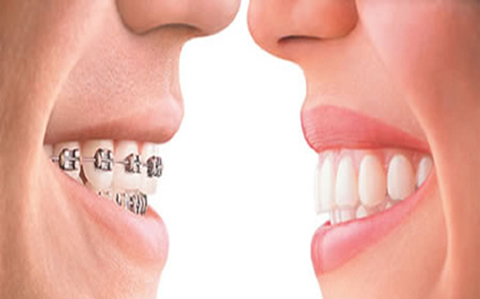
Orthodontics is a branch of dentistry specializing in the diagnosis, prevention, and treatment of jaw, face and bite irregularities (malocclusions*). Orthodontic treatment is provided by an oral health care provider known as an orthodontist, who has completed two to three years of additional training beyond dental school.
Recent years have brought about many changes within the dental industry, specifically with regards to orthodontic treatment and care. Now more than ever patients are experiencing fewer incidences of cavities and missing teeth due to the heightened awareness of fluoride use and preventative dentistry. This increasing awareness on the health and look of a patient’s smile has fueled the desire for many to seek out orthodontia not only as a medical necessity, but for cosmetic reasons as well.
Whether it’s traditional braces or custom made removable appliances, orthodontics can help you have the healthy, straight, beautiful smile you’ve been waiting for!
Give us a call today and schedule your orthodontic consultation!
*Malocclusion is the technical term for teeth that don’t fit together correctly. Malocclusions not only affect the teeth, but also the appearance of the face. Most malocclusions are inherited;however some are due to acquired habits such as thumb sucking and tongue thrusting. The spacing left from an adult tooth being extracted or an early loss of a baby tooth can also contribute to a malocclusion.
Dental Emergencies
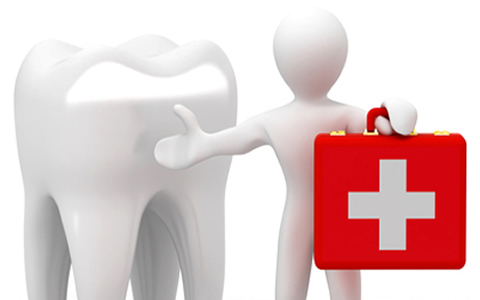
Dental emergencies are quite frightening and often painful. Prompt treatment is almost always required to alleviate pain and to ensure the teeth have the best possible chance of survival.
Sometimes, teeth become fractured by trauma, grinding, or biting on hard objects. In other cases, fillings, crowns, and other restorative devices can be damaged or fall out of the mouth completely. If there is severe pain, it is essential to contact our office immediately. The pain caused by dental emergencies almost always gets worse without treatment, and dental issues can seriously jeopardize physical health.
Types of dental emergency and how to deal with them
Avulsed tooth (tooth knocked out)
If a tooth has been knocked clean out of the mouth, it is essential to see a dentist immediately. When a tooth exits the mouth, tissues, nerves, and blood vessels become damaged. If the tooth can be placed back into its socket within an hour, there is a chance the tissues will grow to support the tooth once again.
Here are some steps to take:
- Call our office.
- Pick up the tooth by the crown and rinse it under warm water. DO NOT touch the root.
- If possible, place it back into its socket – if not tuck it into the cheek pouch.
- If the tooth cannot be placed in the mouth, put the tooth into a cup of milk, saliva, or water as a last resort. It is important to keep the tooth from drying out.
- Get to our office, quickly and safely.
We will try to replace the tooth in its natural socket. In some cases, the tooth will reattach, but if the inner mechanisms of the teeth are seriously damaged, root canal therapy might be necessary.
Lost filling or crown
Usually, a crown or filling comes loose while eating. Once it is out of the mouth, the affected tooth may be incredibly sensitive to temperature changes and pressure. Crowns generally become loose because the tooth beneath is decaying. The decay causes shape changes in the teeth – meaning that the crown no longer fits.
If a crown has dropped out of the mouth, make a dental appointment as soon as possible. Keep the crown in a cool, safe place because there is a possibility that we can reinsert it. If the crown is out of the mouth for a long period of time, the teeth may shift or sustain further damage.
When we are not immediately accessible, here are the steps to take:
- Apply clove oil to the tooth to alleviate pain.
- Clean the crown, and affix it onto the tooth with dental cement. This can be purchased at a local pharmacy.
- If the crown is lost, smear the top of the tooth with dental cement to alleviate discomfort.
- DO NOT use any kind of glue to affix the crown.
We will check the crown to see if it still fits. If it does, it will be reattached to the tooth. Where decay is noted, this will be treated and a new crown will be made.
Cracked or broken teeth
The teeth are strong, but they are still prone to fractures, cracks, and breaks. Sometimes fractures are fairly painless, but if the crack extends down into the root, it is likely that the pain will be extreme. Fractures, cracks, and breaks can take several different forms, but are generally caused by trauma, grinding, and biting. If a tooth has been fractured or cracked, there is no alternative but to schedule an appointment as quickly as possible.
Where a segment of tooth has been broken off, here are some steps that can be taken at home:
- Call our office.
- Rinse the tooth fragment and the mouth with lukewarm water.
- Apply gauze to the area for ten minutes if there is bleeding.
- Place a cold, damp dishtowel on the cheek to minimize swelling and pain.
- Cover the affected area with over-the-counter dental cement if you cannot see us immediately.
- Take over-the-counter pain reliever.
The nature of the break or fracture will limit what we are able to do. If a fracture or crack extends into the root, root canal therapy is often the most effective way to retain the tooth. In the case of a complete break, your dentist will usually affix the fragment back onto the tooth as a temporary measure.
Dislodged/loose teeth
When a tooth has been dislodged or loosened from its socket by trauma or decay, it might be possible to save it. If the tooth remains in the mouth still attached to the blood vessels and nerves, there is a good chance root canal therapy will not be necessary.
If you have questions or concerns about dental emergencies, please contact our office.
Periodentics
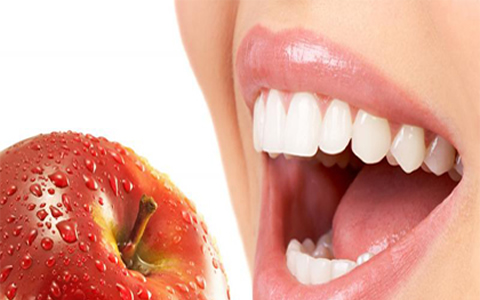
- Antibiotic Treatment
- Gum Recession
- Oral Cancer Exam
- Oral Cancer Exam
- Pocket Irrigation
- Prophylaxis (Teeth Cleaning)
The term “periodontics” refers to the dental specialty that pertains to the prevention, diagnosis and treatment of periodontal disease that affects the gums and jawbone. The gum tissues serve to surround and support the teeth and the underlying jawbone anchors teeth firmly in place. Periodontists have completed several years of extra dental training and are concerned with maintaining the function, health and aesthetics of the jawbone and tissues.
Reasons for periodontal treatment
Periodontal disease is a progressive condition which begins with mild gum inflammation called gingivitis. It is the leading cause of tooth loss in adults living in the developed world, and should be taken very seriously. Periodontal disease (often called gum disease) is typically signified by red, swollen, painful, or bleeding gums, but in some cases has no noticeable symptoms.
Periodontal disease generally begins when the bacteria living in plaque cause an infection in the surrounding tissues of the teeth, causing them to become irritated and painful. Eventually, this infection will cause the jawbone to recede and the tooth to become loose.
There are several reasons why periodontal treatment may be necessary:
- Moderate/advanced gum disease – This occurs when the gums are bleeding, swollen or red around most teeth and the jawbone has begun to recede.
- Localized gum recession – The infection which propagates moderate or advanced gum disease often begins in one area. Gum recession may also be caused due to over brushing with a hard bristle brush, or due to a tooth that is not positioned properly. Immediate treatment is required to prevent further spreading.
- Before crown lengthening – The periodontist may lengthen the crown of the tooth by removing surrounding soft tissue to provide more tooth exposure.
- Ridge augmentation – This procedure, often called “recontouring” may be required to correct an uneven gum line. Before embarking on treatment, a periodontist needs to treat any bacterial infections and periodontitis.
In the case of mild/moderate periodontal problems, the focus of the periodontist will be on curing the underlying bacterial infection and then providing advice on the most appropriate home cleaning methods.
Sometimes a deep scaling is needed to remove the bacterial plaque and calculus (tartar) from the teeth and tissues. Where periodontal disease is advanced and the jawbone has regressed significantly, more intensive cleaning may be recommended and loose teeth that cannot be saved will be removed.
The periodontist is trained in all aspects of dental implant procedures, which can restore functionality to the mouth when teeth have been affected by periodontitis.
Because periodontal disease is progressive, it is essential to remove the bacteria and calculus build up to halt the spread of the infection. Your dentist will be happy to advise you on effective cleaning methods and treatment options.
Surgical Instructions
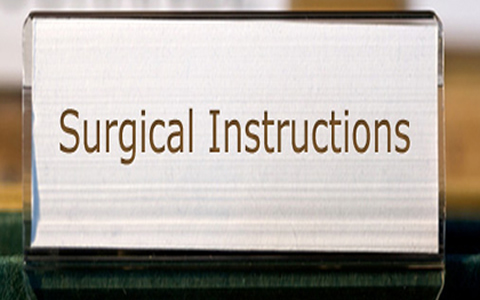
While most dental surgery is performed on an out-patient basis, it remains an involved procedure that requires specific preparation and aftercare. In an effort to provide safe, comfortable care, we encourage you to review our pre- and post-operative instructions, which are intended to facilitate a smooth operation and safer recovery.
If you have any questions or concerns about your surgery, please contact our practice today.
Cosmetic Dentistry

- Composite Fillings
- Porcelain Crowns (Caps)
- Dental Implants
- Porcelain Fixed Bridges
- Porcelain Veneers
- Tooth Whitening
In the past decade there has been a dramatic interest in cosmetic dentistry. We all realize that having a healthy, bright, beautiful smile enhances our appearance and allows us to smile with confidence. Thanks to the advances in modern cosmetic dentistry, we are able to improve our teeth and smiles with quick, painless and surprisingly affordable treatments.
Cosmetic dental treatments can:
- Change the size, shape, and alignment of certain teeth.
- Fill in unattractive spaces between teeth.
- Improve or correct bites.
- Lighten or brighten the color of teeth.
- Repair decayed, broken, cracked, or chipped teeth.
- Replace missing teeth.
- Replace old, unattractive dental treatments.
Remember, your smile speaks before you even say a word!
Restorations
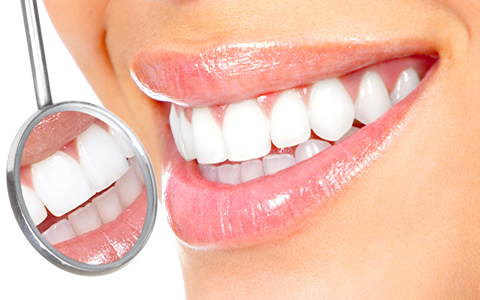
- Composite Fillings
- Crowns (Caps)
- Dentures & Partial Dentures
- Fixed Bridges
- Root Canal Therapy
It’s great news that the incidence of tooth decay has significantly diminished over the years due to the use of fluorides and an increase in patient awareness. However, teeth are still susceptible to decay, infection, and breakage and sometimes need to be restored back to health. Through improved techniques and modern technology, we are now able to offer more options for restoring a tooth back to its normal shape, appearance and function.
Should your teeth ever require a restorative treatment, you can be rest assured knowing we will always discuss with you the available options, and recommend what we believe to be the most comfortable and least invasive treatment. Providing you with excellent care is our number one priority when creating your beautiful smile.
Reasons for restorative dentistry:
- Enhance your smile.
- Fill in unattractive spaces between teeth.
- Improve or correct an improper bite.
- Relieve dental pain.
- Repair damaged and decayed teeth.
- Replace missing teeth.
- Replace old, unattractive dental treatments.
- Restore normal eating and chewing.
Remember, your smile speaks before you even say a word!
Dental Anxiety and Fear

- Oral Pathology
- Wisdom Teeth Extractions
The overwhelming fear of dental appointments can be a common cause of anxiety.Many people visualize a drill-wielding man in a white coat just waiting to cause pain and remove teeth. The reality, however, is very different.The comfort, relaxation, and happiness of the patient are the primary focus of any good dental practice. The staff at the practice will do whatever they can to reduce anxiety, allay fears, and provide painless, quick treatments.
Recent years have brought about many changes within the dental industry, specifically with regards to orthodontic treatment and care. Now more than ever patients are experiencing fewer incidences of cavities and missing teeth due to the heightened awareness of fluoride use and preventative dentistry. This increasing awareness on the health and look of a patient’s smile has fueled the desire for many to seek out orthodontia not only as a medical necessity, but for cosmetic reasons as well.
Here is a list of some of the most common dental fears:
- Fear of embarrassment about the condition of teeth.
- Fear of gagging.
- Fear of injections.
- Fear of loss of control.
- Fear of not becoming numb when injected with Novocain.
- Fear of pain.
- Fear of the dentist as a person.
- Fear of the hand piece (or the drill).
How can one overcome dental anxiety?
Dental anxiety and fear can become completely overwhelming. It is estimated that as many as 35 million people do not visit the dental office at all because they are too afraid. Receiving regular dental check-ups and cleanings is incredibly important. Having regular routine check-ups is the easiest way to maintain excellent oral hygiene and reduce the need for more complex treatments.
Here are some tips to help reduce dental fear and anxiety:
Talk to us – We can’t read minds. Though it can be hard to talk about irrational fears with a stranger, we can take extra precautions during visits if fears and anxiety are communicated.
Bring a portable music player – Music acts as a relaxant and also drowns out any fear-producing noises. Listening to calming music throughout the appointment will help to reduce anxiety.
Agree on a signal – Many people are afraid that the dentist will not know they are in significant pain during the appointment and will continue with the procedure regardless. The best way to solve this problem is to agree on a “stop” hand signal. Both parties can easily understand signals like raising the hand or tapping on the chair.
Spray the throat – Throat sprays (for example, Vicks®Chloraseptic® Throat Spray) can actually control the gag reflex. Two or three sprays will usually keep the reflex under control for about an hour.
Take a mirror – Not being able to see what is happening can increase anxiety and make the imagination run wild. Watching the procedure can help keep reality at the forefront of the mind.
Sedation – If there is no other way to cope, sedation offers an excellent option for many people. There are several types of sedation, but the general premise behind them is the same: the patient regains their faculties after treatment is complete.
Ask about alternatives – Advances in technology mean that dental microsurgery is now an option. Lasers can be used to prepare teeth for fillings, whiten teeth, and remove staining. Discuss all the options with us and decide on one that is effective and produces minimal anxiety.
If you have questions or concerns about how we can help you overcome anxiety and fear, please contact our office.
Oral & Maxillofacial Surgery
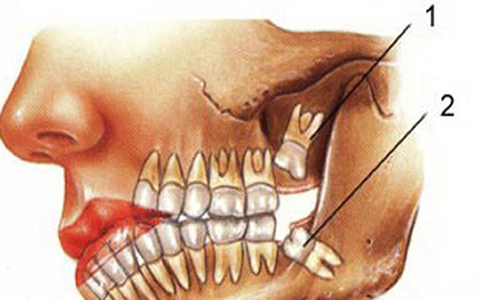
- Oral Pathology
- Wisdom Teeth Extractions
Oral and maxillofacial surgeons are specialists with advanced training and expertise in the diagnosis and treatment of various head and neck conditions and injuries. After four years of dental school, an oral and maxillofacial surgeon completes four to six years of additional formal training in treating the craniomaxillofacial complex. This specialty is one of 9 dental specialties recognized internationally and by the American Dental Association (ADA).
An oral and maxillofacial surgeon can diagnose and treat a wide variety conditions. The following are just some of the many conditions, treatments and procedures oral and maxillofacial surgeon deal with on a daily basis:
- TMJ, Facial Pain, & Facial Reconstruction.
- Dental Implants.
- Tooth Extractions & Impacted Teeth.
- Wisdom Teeth.
- Misaligned Jaws.
- Cleft Lip & Palate.
- Apicoectomy.
- Oral Cancers, Tumors, Cysts, & Biopsies.
- Sleep Apnea.
- Facial Cosmetic Surgery.
Whether your dentist refers you to our office, you have pain or symptoms causing you concern, or you simply have questions you would like answered, please contact our office today to schedule an appointment. We are here to answer your questions and provide the treatment you deserve!
Endodontics
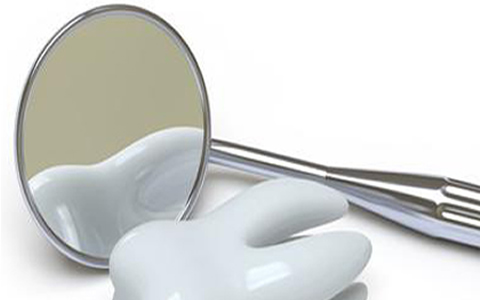
Endodontics is a specialized branch of dentistry that deals with the complex structures found inside the teeth. The Greek word “Endodontics” literally means “inside the tooth” and relates to the tooth pulp, tissues, nerves, and arterioles. Endodontists receive additional dental training after completing dental school to enable them to perform both complex and simple procedures, including root canal therapy.
Historically, a tooth with a diseased nerve would be removed immediately, but endodontists are now able to save the natural tooth in most cases. Generally, extracting the inner tooth structures, then sealing the resulting gap with a crown restores health and functionality to damaged teeth.
Signs and symptoms of endodontic problems:
- Inflammation and tenderness in the gums.
- Teeth that are sensitive to hot and cold foods.
- Tenderness when chewing and biting.
- Tooth discoloration.
- Unexplained pain in the nearby lymph nodes.
Reasons for endodontic treatment
Endodontic treatment (or root canal therapy) is performed to save the natural tooth. In spite of the many advanced restorations available, most dentists agree that there is no substitute for healthy, natural teeth.
Here are some of the main causes of inner tooth damage:
Bacterial infections – Oral bacteria is the most common cause of endodontic problems. Bacteria invade the tooth pulp through tiny fissures in the teeth caused by tooth decay or injury. The resulting inflammation and bacterial infection jeopardize the affected tooth and may cause an abscess to form.
Fractures and chips – When a large part of the surface or crown of the tooth has become completely detached, root canal therapy may be required. The removal of the crown portion leaves the pulp exposed, which can be debilitating painful and problematic.
Injuries – Injuries to the teeth can be caused by a direct or indirect blow to the mouth area. Some injuries cause a tooth to become luxated or dislodged from its socket. Root canal therapy is often needed after the endodontist has successfully stabilized the injured tooth.
Removals – If a tooth has been knocked clean out of the socket, it is important to rinse it and place it back into the socket as quickly as possible. If this is impossible, place the tooth in special dental solution (available at pharmacies) or in milk. These steps will keep the inner mechanisms of the tooth moist and alive while emergency dental treatment is sought. The tooth will be affixed in its socket using a special splint, and the endodontist will then perform root canal therapy to save the tooth.
What does an endodontic procedure invlove?
Root canal therapy usually takes between one and three visits to complete. Complete X-rays of the teeth will be taken and examined before the treatment begins.
Initially, a local anesthetic will be administered, and a dental dam (protective sheet) will be placed to ensure that the surgical area remains free of saliva during the treatment. An opening will be created in the surface of the tooth, and the pulp will be completely removed using small handheld instruments.
The space will then be shaped, cleaned, and filled with gutta-percha. Gutta-percha is a biocompatible material that is somewhat similar to rubber. Cement will be applied on top to ensure that the root canals are completely sealed off. Usually, a temporary filling will be placed to restore functionality to the tooth prior to the permanent restoration procedure. During the final visit, a permanent restoration or crown will be placed.
If you have questions or concerns about endodontic procedures, please contact our office.
Night Guard
Custom designed mouth guards and night guards are made of flexible plastic and molded to fit the shape of your teeth. Mouth guards are recommended to protect the jaw and teeth during physical activity and sports such as boxing, football, basketball, or other activities where your mouth may be hit. Guards also protect the soft tissues of your tongue, lips and check lining. Night guards are recommended for patients who clench or grind their teeth at night as a way to protect their teeth and bite.
If you have decided a guard is right for you, we will take an impression of your teeth which will then be sent to a lab to make a custom fit guard. In most cases you can choose from a variety of colors and styles.On average, guards last over 10 years.
-
-
1st YEAR ANNIVERSARY PROMOTION
SPECIAL FOR RIVERVIEW COMMUNITY
FREE
Electric Tooth Brush for Children
Cleaning
$59 D1110
Extraction
$99 D7140
Crown
30% off
Denture
40% off
-
Meet Dr. Thuvan Vo
Dr. Thuvan Vo is General Dentist with Special Touch. She graduated from the Boston University in 2005 with honor Cum Claude. She mastered her cutting-edge cosmetic talent.
-
Dr. Thuvan Vo is a General Dentist with a Special Touch. Modern, Painless, Affordable.
Open Saturday
Most Insurance and Medicaid Accepted
- Mon – Fri
9:00 am – 5:00 pm
- Saturday
9:00 am – 1:00 pm
- Sunday
closed
- Mon – Fri













